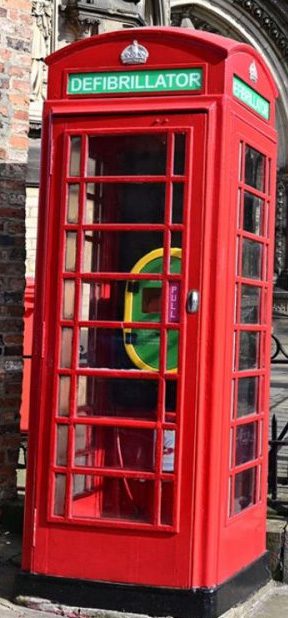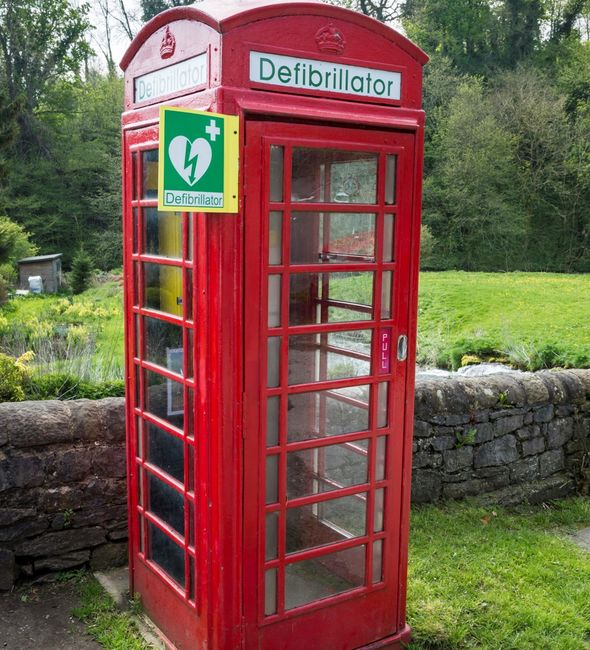Telephone Box Medical Centres
The famous Gilbert Scott designed K6 or Jubilee kiosk was launched in 1936 to celebrate King George V’s silver jubilee. By the 1960s almost 70000 Kiosks could be found across the countryside, and whilst the public payphone service has undergone enormous changes since then, the traditional red kiosk had already forged itself as an iconic symbol of British life.
People use the public payphone service less and less these days. In order to maintain a social service where it is needed most, it has, in recent years, been necessary to reduce the overall number of public payphones on our high streets. Understanding that the red telephone box plays a significant part in our national heritage and in many cases forms a focal point for communities across the country BT is able to offer communities the opportunity to keep these kiosks. BT and Cymru Hearts are working together to help communities turn their adopted telephone boxes into medical centres, by using them as homes for Public Access Defibrillators, storing the defibrillation in a well-recognised, safe, weather-protected location.
Adoption and Installation
Adoption of the telephone box is £1 from BT, and a parish council can undertake this for you. There is no automatic right to use the unmetered supply in a kiosk, only the 8 watts in the adoption agreement for the internal light.
“Defibrillator cabinet must be class 2 and compliant to BS7671-416/417 in its construction and manufactured by an ISO 9001/2 certified manufacturer.”

Safety
Telephone Kiosks are not earthed. So to place a heated cabinet into a kiosk will require access to electricity. Either permission has to be sought from BT to access the unmetered supply, which will happen with all Calon Hearts projects. The defibrillator cabinet must also be a “class II electrical device” or if not, suitable earthing to comply with the relevant BSi regulations will have to be installed. This may mean an earthing spike, which on a road will require a survey from highways to ensure no gas, sewage, or other electrical cable is damaged in the process. There is normally a cost for this survey, but please consult your local highways officer first.
Community Engagement
This type of project is great for bringing parts of the community together.
Listed Buildings
Note that many kiosks are listed and so must be externally retained to be the same visual appearance. Under agreement from English Heritage, internally the equipment can have a change of use. The “telephone” signs cannot remain unless there are other clear instructions that the kiosk contains a defibrillator. Please consult your local listings officer for any local requirements.
Ready to Adopt
If you wish to convert your telephone box into a defibrillator location, please contact us. More information can be found on the BT website below. In particular please refer to the FAQ section on the BT website.
More information about adopting a phonebox can be found on the BT website here
